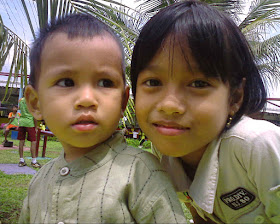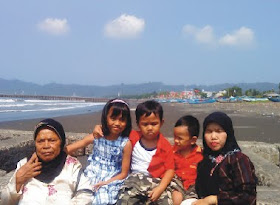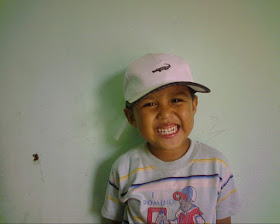Finally, to ensure that all members of the group has mastered the lesson, all students will be given academic game. In the academic game students will be divided in the table - table tournaments, where every table tournament consists of 5 to 6 people who are representatives from each group - each. In each table games have endeavored to keep participants coming from the same group. Students are grouped in a single table tournaments are homogeneous in terms of academic ability, meaning the ability of a single table tournament, each participant tried to be equal. This can be determined by looking at the value they receive at the pre-test. Score obtained, each participant in the academic game is recorded on the score sheet recorder. Score obtained by summing the scores - scores obtained by members of a group, then divided by the number of members of the group. Group score is used to give a team award certificate with a specific predicate lists.
According to Slavin type TGT cooperative learning consists of the 5-step stages: stage presentation of the class (class precentation), learning in groups (teams), games (geams), game (tournament), and perhargaan group (team recognition). Based on what is revealed by Slavin, the cooperative learning model has a characteristic type TGT - the following characteristics.
a) Students Working in Groups - Small Group
Students are placed in groups - groups whose members study 5 to 6 people who have the ability, gender, and ethnic or different races. Given the heterogeneity of the group, is expected to motivate students to help each other among more capable students with less-capable students in mastering subject matter. This will cause the growing sense of self-awareness in students that cooperative learning is fun.
b) Tournament Games
In this game every student who is the representative of the competing group. Students who represent the group, respectively - each placed in a table - table tournaments. Each table was occupied tournament 5 to 6 participants, and endeavored so no participant from the same group. In each table tournaments each participant homogeneous cultivated. This game begins by telling the rules of the game. After the game begins by distributing cards - about to play cards (cards over and put the key on the table upside down so the key question and unreadable). At each table game tournaments conducted by the following rules. First, each player in each table to determine once and readers about the first player by lottery. Then the player who wins the lottery took the card containing lottery numbers matter and given to the reader about. The reader will read about the matter in accordance with the lottery numbers drawn by the players. The next question is done independently by the players and challengers in accordance with the time specified in the problem. After the time to do the problems over, then the player will read the results of his work that will ditangapi by the challenger in a clockwise direction. After that readers will unlock the question answers and scores are given only to players who answer correctly or challenger who first gave the correct answer.
If all the players to answer one of the cards left alone. The game continued on the card the next question until all the cards were read out questions, which the player played the position in a clockwise direction so that each participant in a single table tournament can serve as a reader question, players, and the challenger. Here, the game can be done over and over - once with the condition that each participant must have the same opportunity as the players, challengers, and reader questions.
In this game the reader about the only duty is to read the questions and answers unlocked, must not answer or give an answer to the other participants. After all the cards over missed, every player in a single table to calculate the number of cards received and determine how many points are earned based on the tables provided. In addition, each player returned to the original group and report the points obtained based on tables that have been provided. In addition, each player returned to the original group and report the obtained points to the head of the group. Chairman of the group include points earned in the table group members who have provided, then the criteria for the award received by the group.
c) Appreciation Group
The first step before giving the award is to calculate the average score of the group. To select the average score of the group is done by adding the scores obtained by each - each member of the group divided by divided by the number of members of the group. Award is based on the average - average points obtained by the group.
In the implementation of cooperative learning model types there are several stages TGT is to be implemented, namely:
(1) Teaching (teach)
Mempersentasekan or presenting material, delivered goals, tasks, or activities that need to be students, and provide motivation.
(2) Study Group (study team)
Students work in groups of 5 to 6 people with academic ability, gender, and racial / ethnic different. After the matter to inform teachers, and learning objectives, discussion groups using LKS dengen. In the group discussions to solve problems together, each correct answer and if there are any members of the group in answering.
(3) Games (tournament games)
The game was followed by members of their groups - each group is different. The purpose of this game is to find out whether all group members have mastered the material, where the questions - questions that relate to the material provided that have been discussed in group activities.
(4) Award the group (team recognition)
Awards (rewards) based on the average points obtained by the group from the game







Posting Komentar